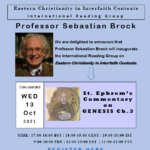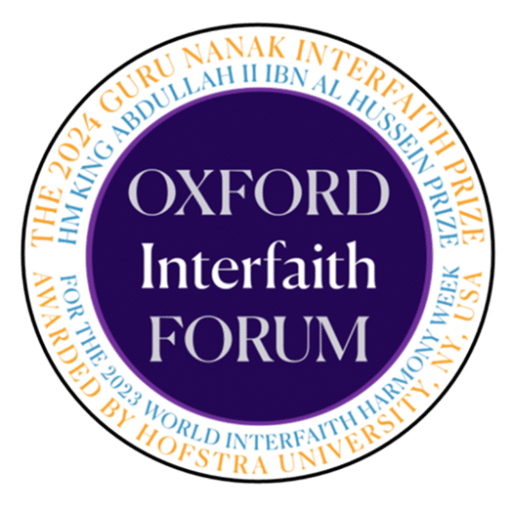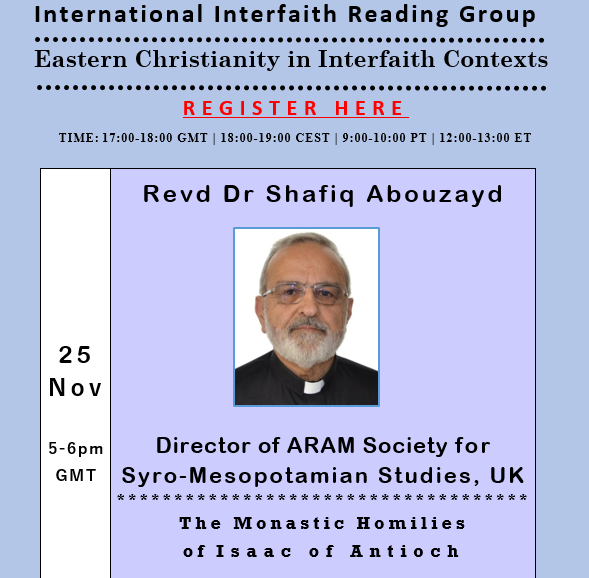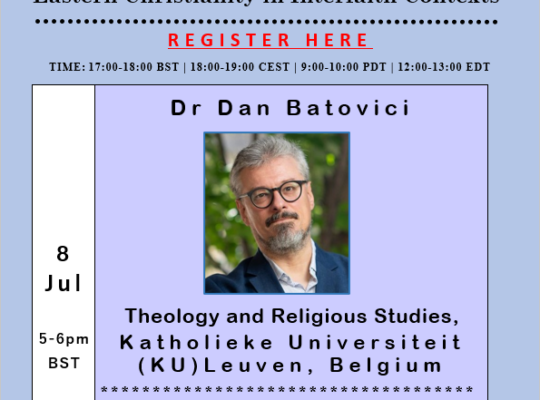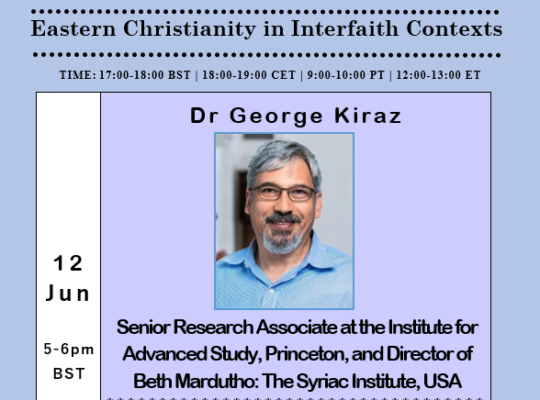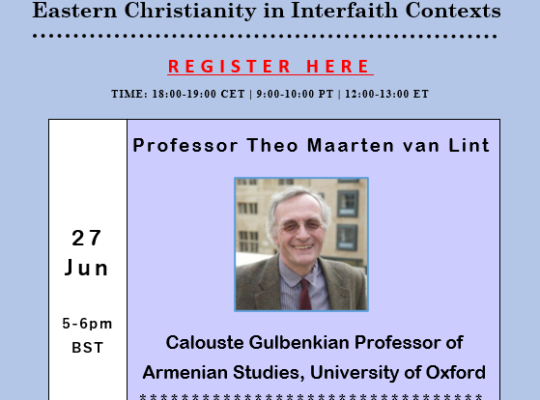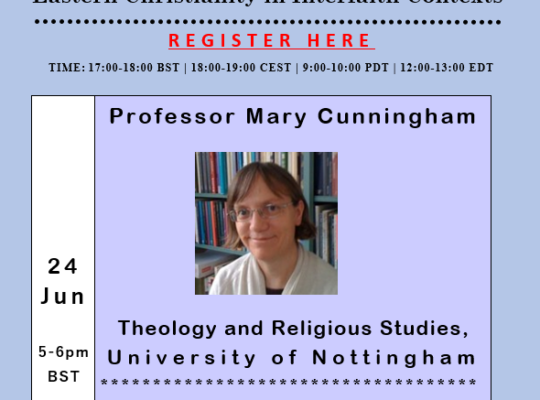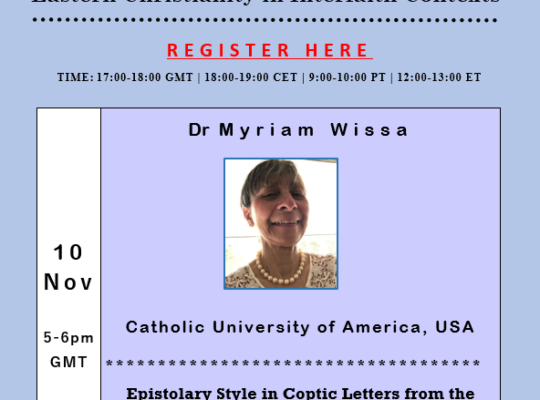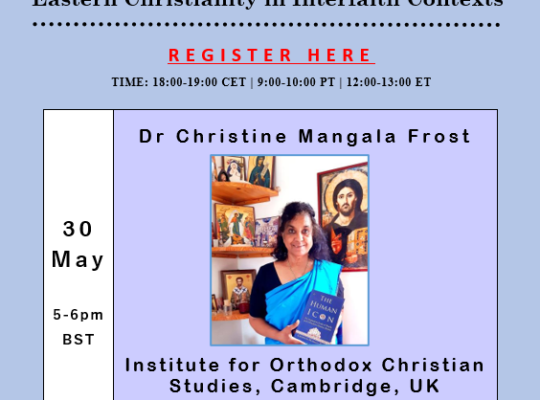25 November, 2024
We are deeply honoured to welcome Revd Dr Shafiq Abouzayd, Director of ARAM Society for Syro-Mesopotamian Studies, to lead a session of the Eastern Christianity in Interfaith Contexts Reading Group.
Here are the details of this fascinating event.
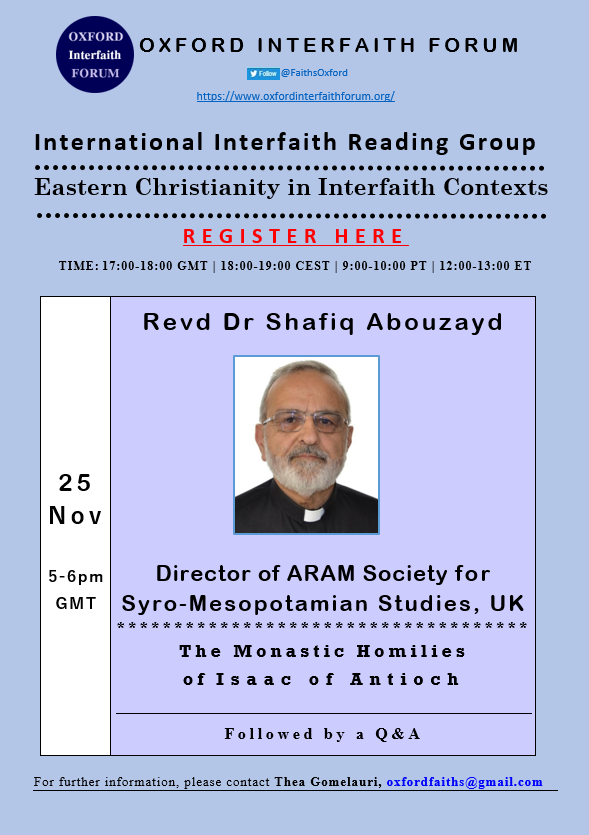
Title: The Monastic Homilies of Isaac of Antioch
Abstract: My paper focuses exclusively on Isaac of Antioch’s monastic homilies, as Bedjan published in “Homiliae S. Isaaci” (Paris, 1903). The only monastic homilies in Bedjan’s collection are numbers 2, 3, 4, 6, 9, 13, 25, 37, 38, 39, 40, 41, 42, 43, 44, and 45, as these are specifically addressed to monks. The remaining homilies by Isaac in Bedjan’s corpus can be categorized into two distinct groups. One group is directed toward ascetics; however, there is no indication that these were intended for ascetic monks. Instead, they appear to be written for lay Christian ascetics. The other group addresses general Christian themes and seems to have been created for the education of ordinary Christians.
The difficulty of my research lies in the ambiguous identity of the figure known as Isaac of Antioch, who remains an enigmatic personality despite his substantial body of work. Furthermore, the author does not identify himself by name in any of his homilies, which adds to the confusion surrounding his identity. Notably, the name Isaac was attributed to three different Syrian authors during the fifth century (see Bedjan, Homiliae, V-VIII).
Since Isaac does not specify the names of the monks to whom he wrote his homilies, I designated each monk as “Isaac’s monk,” “Isaac’s hermit,” or “Isaac’s disciple” in my references. When he addresses a monastic community, I refer to it as “Isaac’s community” or “the monastic community of the author/Isaac.” It is also worth noting that the terms “hermit” and “monk” are used interchangeably in Isaac’s homilies, as he does not differentiate between them. This usage suggests that Isaac is part of the early Syrian monastic tradition.
What complicates my research is the unclear identity of the so-called Isaac of Antioch, who remains an enigmatic figure despite his extensive output. The author adds to this confusion by not mentioning his own name in any of his homilies. Additionally, the name Isaac was attributed to three different Syrian authors during the fifth century (see Bedjan, Homiliae, V-VIII). Furthermore, my work on Isaac of Antioch is challenging due to the scarcity of literature on him. To date, no one has conducted a study that explores the personality and spirituality of this author as reflected in his works.
However, it is the first complete work on Isaac of Antioch’s monastic homilies, which have been completely translated into English and will be gradually published in the ARAM Periodical.
Speaker: Revd Dr Shafiq Abouzayd, Director of ARAM Society for Syro-Mesopotamian Studies, Oxford, UK
Chair: Professor Sebastian Brock, FBA, University of Oxford, UK.
Date: 25 November, 2024
Time: 17:00-18:00 GMT | 9:00-10:00 PT | 12:00-13:00 ET
Venue: online
If you would like to join the Eastern Christianity in Interfaith Contexts Reading Group, please sign up here.
Recording of the session
Related Sessions
- The Peshitta and the Making of the Antioch Bible

- Narsai’s Memra 49, on Adam and Eve: O Instructive Fault!
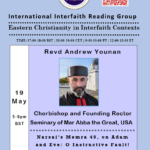
- Basil of Caesarea and Gregory of Nazianzus on the Problem with the Devil
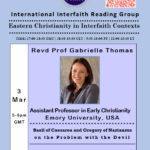
- Byzantine Aristocrat, Monk, Mystic and Dissident: Symeon the New Theologian (949-1022)
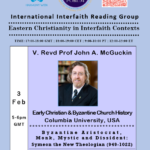
- Heavenly Hours: Creation and Time in the Syriac Testament of Adam
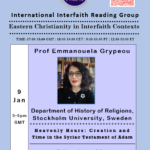
- The Monastic Homilies of Isaac of Antioch
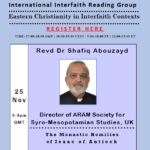
- Christian Trees
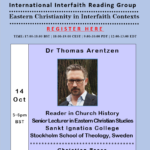
- Dialogue and Fire in a Fragmentary Syriac Martyrdom Narrative
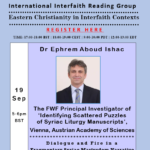
- The Origins of the First Anti-Jewish Good Friday Hymns

- Finding a Home: The West Syriac Context of the Clementine Epistles on Chastity
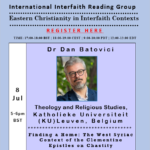
- Who was Mary, the Blessed Virgin and Mother of God? A Byzantine hagiographical narrative by the ninth-century Monk Epiphanios
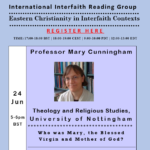
- Nikos Kazantzakis and Orthodox Christianity
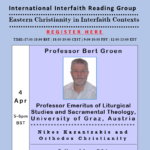
- The Miracle of Pilgrimage: A Coptic Journey to the Holy Land During the Ottoman Period
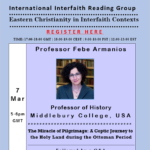
- Setting the Stage: The Rose of Performance in Studying Late Ancient Hymnody
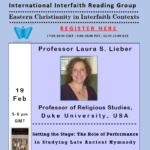
- Ephrem the Syrian and a New Beginning in Syriac Poetry
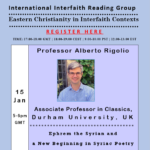
- A Jew Reads the Gospels in Syriac: Azariah de Rossi’s Critique of the Vulgate (1577)
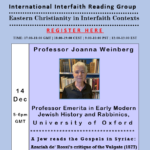
- The Manuscript Project at the Coptic Monastery of St Paul the Hermit at the Red Sea, Egypt

- Mary’s Ordeal: A Syriac Narrative Poem on Many and Joseph
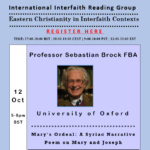
- Resurrection of the Human Body according to John of Dara’s Mimro I:4
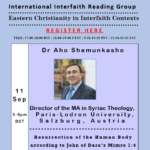
- Gregory of Nyssa: On the Human Image of God

- ‘Conception by ear’ and Redemption of the Human Sensorium in Ephrem’s Thirty-fifth Madrasha on the Church
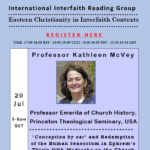
- From Edessa to South Arabia and Back: The Syriac Story of Bishop Paul and Priest John and Models of Sanctity in the Medieval Middle East
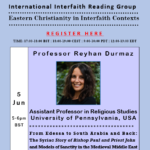
- Wrestling with Calculating-Thoughts: Mental Training according to Evagrius of Pontus
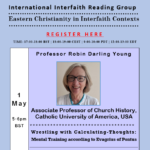
- Returning the Ticket: God and Evil in the Brothers Karamazov
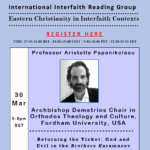
- Ecumenical Patriarch Athenagoras: an Orthodox Dialogue with Islam
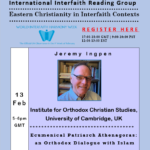
- Matta el-Meskin/Matthew the Poor: a ‘Contemporary Desert Father’ on Christian Unity

- Signs of Miraculousness: The Inimitability of Jacob of Serugh’s Teaching
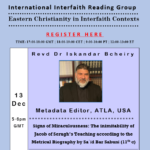
- Epistolary Style in Coptic Letters from the Late Third Century to the Early Fifth Century
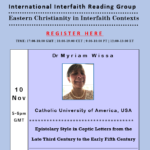
- Sarah and the Akedah: a Syriac Narrative Poem on Genesis 22

- The Paterik of the Kyivan Caves Monastery: Monk Polikarp in Discourse 14
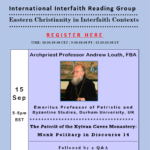
- Jacob of Sarug on the Canaanite Woman (Mt 15:21-28, Mk 7:24-30): Biblical Storytelling and Models of Faith

- Commemorating the saints at Turfan: Mart Shir and Mar Barshabba
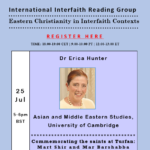
- The Opening Prayers of Saint Gregory of Narek’s Book of Lamentations
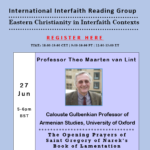
- Alexander Schmemann on Theotokos vis-à-vis Kali a Hindu Mother Goddess

- Enoch and the Fallen Angels in the Ethiopian Tradition
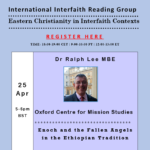
- Narsai on the Virgin Mary
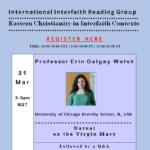
- An Anonymous Syriac Dialogue between Mary and the Angel
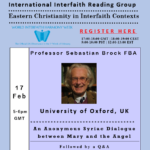
- Dadisho of Qatar: Questioning the Desert Fathers
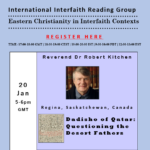
- George the Athonite on Matters of Faith and Rite, According to the Life of St George the Hagiorite
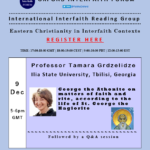
- Temple, Shekhinah and Prayer in Isaac of Nineveh’s III.VIII
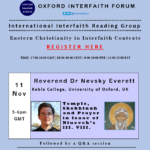
- St. Ephrem’s Commentary on Genesis Ch.3
